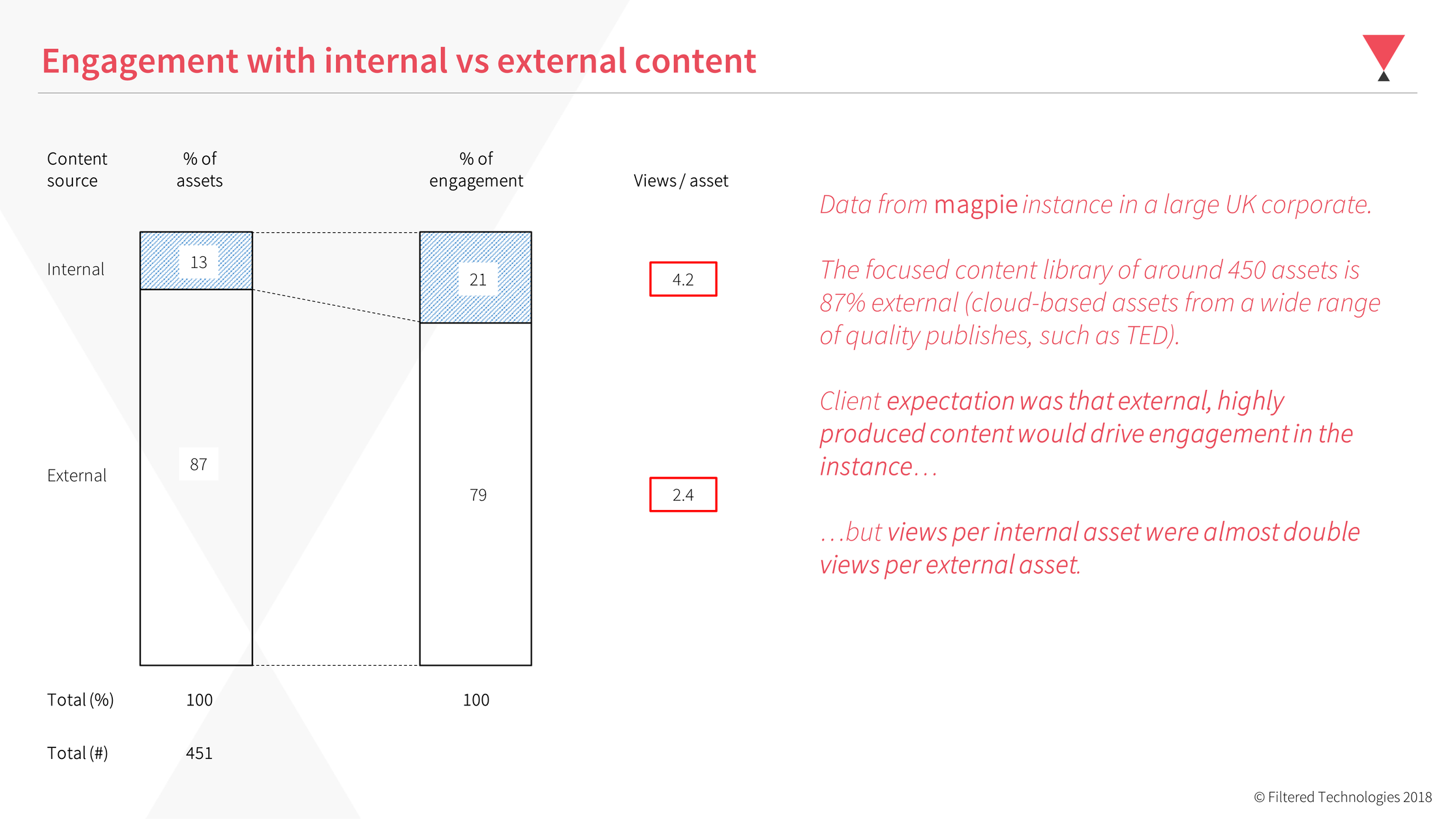In weighing the benefits of internal versus external content, I used to think there was a simple trade-off. External content offered the polish and reliability that come with scale; internal material offered greater relevance because of the shared organisational context. External resources should drive engagement - but internal content would offer greater return on the engagement that does eventuate.
Now I think that view underestimates the importance of relevance to engagement, as well as impact.
In our clients, there is often the expectation that engagement with bought-in libraries of content will be greater than it is with less highly-produced internal resources. But the data often belie that assumption. This is an example from one of our instances, focused on management and digital skills.
Engagement with the (relatively small proportion of) internal resources is almost double that for bought-in libraries.
This makes sense in the light of one of the key findings of GoodPractice’s report on The Secret Life of UK Managers. Their survey work found that "…relevance of content is the most important factor in determining how frequently managers use a website to help them solve workplace management challenges."
We’re now interested in understanding the extent to which external and internal resources can be made to support each other. Can external resources catalyse usage of relevant internal content? Which capabilities are best supported with each? As ever keen to hear your thoughts, and we’ll keep sharing what we find as we uncover it.

